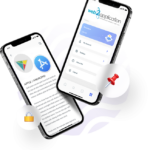
Exploring The Many Use Cases Of Graph API In Modern Web Development
- Mike
- March 20, 2024
- general information
- Graph API In Modern Web Development
- 0 Comments
Staying ahead of the curve is crucial in the ever-evolving landscape of web development. One tool that has revolutionized how developers interact with data is Graph API. Whether you’re looking to streamline real-time data retrieval, enhance user experience, or simplify complex data structures, it offers a versatile solution for modern web development. Join us as we explore the myriad ways Graph API can elevate your projects and propel them to new heights!
The Evolution Of Web Development And The Need For Graph Api
Web development has progressed from static websites to dynamic, interactive applications. With the rise of complex data structures and real-time updates, developers require efficient tools to manage these demands seamlessly. This is where Graph API steps in as a game-changer in web development.
Traditionally, accessing and manipulating data across various platforms was cumbersome and time-consuming. However, with API’s unified interface and query language, developers can now effortlessly fetch data from multiple sources.
The need for streamlined communication between different systems prompted the creation of Graph API. By providing a standardized way to interact with interconnected data sets, it dynamically simplifies information fetching.
In today’s fast-paced digital landscape, adaptability and efficiency are key factors driving innovation in web development. Embracing technologies like API empowers developers to build responsive applications that seamlessly cater to evolving user needs.
Real-Time Data Retrieval And Management With Graph Api
In today’s fast-paced digital world, real-time data retrieval and management are crucial for web applications to stay relevant and competitive. With Graph API, developers can seamlessly fetch and update data in real-time without manual intervention.
By leveraging API’s capabilities, web developers can ensure that users always have access to the most up-to-date information, enhancing user experience and engagement. Whether retrieving dynamic content or tracking live updates, Graph API enables efficient data handling that keeps websites responsive and interactive.
Moreover, API allows seamless integration with various databases and third-party services, making it easier to synchronize data across multiple platforms in real-time. This functionality streamlines development processes and ensures consistency in information dissemination across different channels.
Utilizing Graph API for real-time data retrieval and management opens up a world of possibilities for modern web development by enabling faster response times, improved user experiences, and enhanced scalability.
Enhanced User Experience Through Graph Api Integration
Imagine a website or application that seamlessly anticipates your needs and preferences as if it knows you inside out. This level of personalized user experience is made possible through the integration of API. Developers can tailor content and recommendations based on individual user interactions by tapping into interconnected data relationships.
It enables platforms to deliver a tailored experience that keeps users engaged and satisfied, from suggesting relevant products to displaying customized content. By analyzing patterns and connections within the data graph, applications can provide a more intuitive and dynamic interface.
Moreover, with real-time updates from various sources consolidated through the API, users can stay informed about changes without constantly refreshing. This ensures that the information displayed is always up-to-date and accurate.
In essence, integrating API enhances user experience by offering personalized suggestions, dynamic content delivery, and real-time updates – ultimately creating a more engaging digital environment for users to interact with effortlessly.
Leveraging Social Media Platforms With Graph Api
With the rise of social media platforms in today’s digital landscape, leveraging Graph API has become essential for developers looking to enhance their applications. By integrating API with platforms like Facebook, Instagram, and Twitter, developers can access valuable user data and streamline their apps’ functionality.
Through this, developers can pull real-time user information such as profile details, posts, photos, and more directly from social media platforms. This allows for a seamless user experience within the application without requiring users to switch between different interfaces.
Moreover, developers can personalize content delivery based on user preferences and behaviors by using API to interact with social media platforms’ APIs. This level of customization enhances user engagement and fosters brand loyalty.
Additionally, leveraging API enables developers to simultaneously implement features like sharing content across multiple social media channels or analyzing user interactions for targeted marketing campaigns. The possibilities for integrating social media platforms with API in modern web development are endless.
Simplifying Complex Data Structures With Graph API
Graph API has genuinely revolutionized the way modern web development functions. API offers developers a wide range of benefits, from real-time data retrieval to enhancing user experience and leveraging social media platforms. One of its most significant advantages is simplifying complex data structures.
Graph API allows developers to easily navigate and manage intricate relationships between different data points. This simplification streamlines the development process and improves web applications’ overall efficiency and performance.
Integrating Graph API into web development projects can significantly enhance functionality, scalability, and user experience. As technology advances rapidly, staying ahead of the curve with tools like Graph API is essential for creating dynamic and successful web applications in today’s digital landscape.


